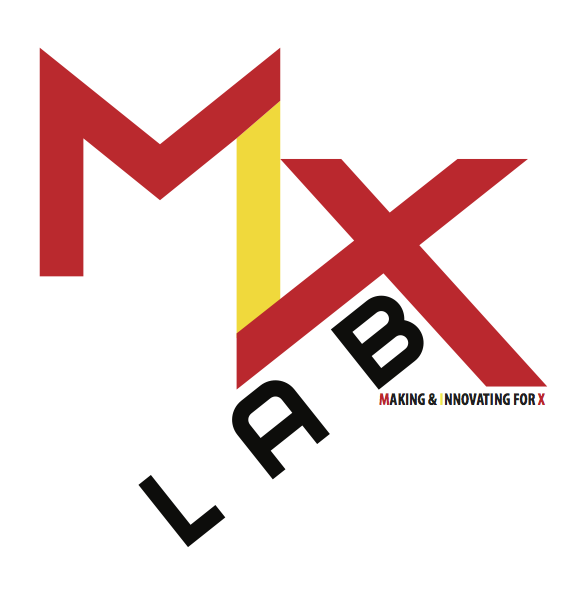From One 3D Printer to a Cloud Based 3D Printing Lab
Andrew Sheldon interviews Jason Frasca of the MIX Lab to discuss how the Feliciano Center for Entrepreneurship went from one 3D Printer supporting their entrepreneurship certificate program to a 3D Printing lab managed by cloud based software supporting the entrepreneurship program, local entrepreneurs and giving rise to an innovation certificate program.
The article below: School ties: Finding a way to fix the logjam at the 3-D printer - Montclair State is using cloud-based technology to help local businesses is written by Andrew Sheldon and first appeared on NJ Biz December 7, 2015
Jason Frasca, entrepreneurship instructor and startup mentor, Montclair State University. - (PHOTO BY AARON HOUSTON)
Luke Lamarca, vice president of technical operations for L&Z Tool and Engineering in Watchung, knows a thing or two about 3-D printing.
“(Three-dimensional) printing is definitely the wave of the future, not only in plastics but in metals,” he said. “For us, it’s always nice to look at something on the screen, but when a customer can actually feel it, look at it and see what the weight is going to be, what the ergonomics of the piece are, it definitely helps when you’re designing a tool.”
Lamarca also knows how difficult it can be to get products produced.
That’s why he was so happy to learn Montclair State University had moved to a cloud-based platform for 3-D printing, enabling the school to handle jobs from local businesses in a faster and easier way than most others.
“We’ve used 3-D printing before, but here’s a place that allows us to send the data right to them online and they will print the part,” he said.
It’s exactly what officials at the school had in mind at the start of the fall semester, when they unveiled their new Feliciano School of Business building, a 143,000-square-foot space designed to be a business school for the 21st century.
The building emphasizes new trends such as co-working spaces and sustainability. But, as Lamarca pointed out, it’s the 3-D printing lab that makes the facility uniquely modern. The lab has 35 cloud-connected 3-D printing devices, technology that puts it at the cutting edge.
“It’s one of nine such innovation centers in the world where we have this cloud-based technology,” said, Jason Frasca, a startup mentor at the Feliciano School of Business. “We are the only ones in the New York metropolitan area that has this platform.”
Here’s why that matters: Because the school’s 3-D printers are connected to the cloud — an unusual occurrence with this technology — plans not only can be sent directly to the printer, but the workflow is improved tremendously.
The cloud technology provides a flexibility that allows the lab to leverage its 35 printers more efficiently than another lab that has more of the machines, but operates in collections of clustered printers.
Montclair State was able to achieve this because all of its printers are made by New York-based MakerBot, which is one of few 3-D printers to have a cloud connection.
“We’re able to administer incoming requests to print to our lab,” Frasca said. “I know there are local universities with more than 100 (printers), but there’s bottlenecks when they’re in clusters of five or seven. They bottleneck quickly when 3-D printing has a success rate of 75 percent and, if you only have five printers clustered, you’re constantly dealing with a lot of down time.
“We’re never not printing.”
This network is based on the MakerBot Innovation Center platform, which Frasca says is the only cloud-based solution to network 3-D printing currently available.
“I’m certain that, in two years, there’ll be a lot of options in this area,” he said. “But, right now, this is the only one.”
The university realizes this technology is a great way for students to get their first foot through the doors of private industry.
“We have a lot of companies coming to us saying they’re interested in our 3-D printing talent,” Frasca said. “So, we’re trying to create internships with companies that are looking for students with 3-D printing knowledge.”
Lamarca, too, sees added value from the perspective of a potential employer.
“I think what they’re doing is great because the students are going to come into this new technology out of college and actually work with companies like ours that need physical parts in the real world,” he said. “I think Montclair is well ahead of the curve with putting this facility and making the investment.”
Frasca said there is even another benefit for the school’s students: increasing the speed at which they can prototype, which allows for a process of more breadth within a single semester.
“They use it to bring their prototypes to life and get instant feedback on what they are creating,” he said. “We don’t have an engineering school to create their prototypes for them, so we’re sort of eliminating the engineer so they can get that instant feedback.
“They can do it much quicker, in just a few weeks, so they can have several iterations throughout the course of the semester.”

